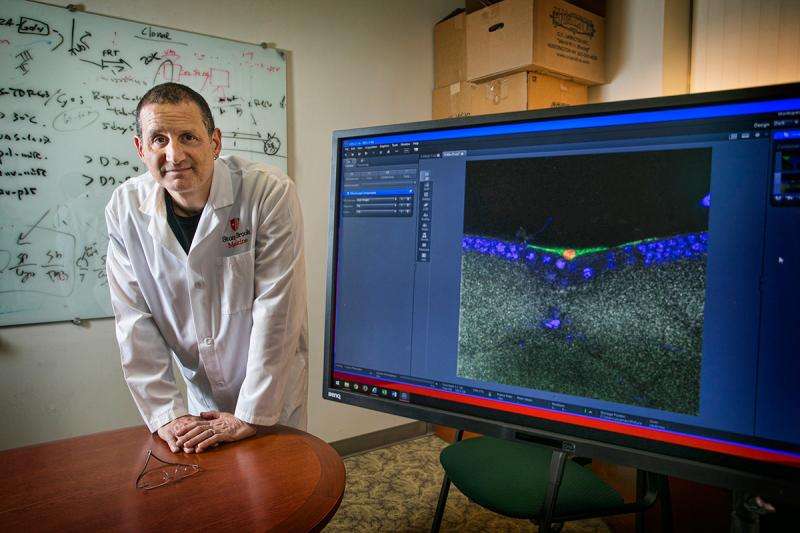Research suggests a possible role for a storm of 'jumping genes' in ALS

By inserting an amyotrophic lateral sclerosis (ALS)-linked human gene called TDP-43 into fruit flies, researchers at Stony Brook University and Cold Spring Harbor Laboratory discovered a potential role for 'transposons' in the disease. Transposons, which are also called 'jumping genes' because they jump from place to place within DNA, are virus-like entities that fill most of the spaces between genes in an organism. The new research demonstrates that these transposons are no longer effectively inhibited, resulting in a storm of jumping genes, leading to DNA damage accumulation and cell death. The research, published in the current issue of PLOS Genetics, may be a clue to the genetic processes of ALS and the idea that anti-transposon systems may collapse in individuals with ALS.
Transposon replication has evolved to the point where almost half of human DNA consists of these jumping gene sequences. But our cells have developed a highly effective immune-like system to stifle the replication of these moving genes in a vast majority of instances. Josh Dubnau, PhD, Professor in the Departments of Anesthesiology and Neurobiology and Behavior at Stony Brook University, and Lisa Krug, a PhD student at Cold Spring Harbor Laboratory, conducted experiments using transgenic fruit flies. Drs Krug and Dubnau discovered that anti-transposon systems appear to collapse in brains of fruit flies that contain the ALS linked human gene.
"The big question is whether the same effects take place in humans," says lead author Dr. Dubnau. "If continued research reveals the same is true for humans, it would suggest clinical strategies to stop the 'jumping genes' from going wild."
In the paper, titled "Retrotransposon activation contributes to neurodegeneration in a Drosophila TDP-43 model of ALS," Drs. Dubnau and Krug engineered the fruit flies to contain TDP-43. Just like humans, this gene caused the fruit flies to experience a progressive loss of movement and premature death. They studied the brains of the fruit flies, in collaboration with Dr. Molly Hammell and colleagues in her Cold Spring Harbor Laboratory. The team found that not only were certain transposons not inhibited and triggered a storm of the jumping genes, but one fly transposon called 'gypsy' appeared to be the lead culprit of the problem. By deactivating gypsy, cell death stopped and the lifespan of the mutant flies improved.
Humans do not have the gypsy transposon but do have a similar one called HERV-K. Previous research has revealed some ALS patients post-mortem had elevated levels of HERV-K.
The next step for the research team is to determine whether jumping genes are similarly activated in ALS patient tissue, and to determine whether they contribute to disease progression.
More information: Lisa Krug et al. Retrotransposon activation contributes to neurodegeneration in a Drosophila TDP-43 model of ALS, PLOS Genetics (2017). DOI: 10.1371/journal.pgen.1006635
















